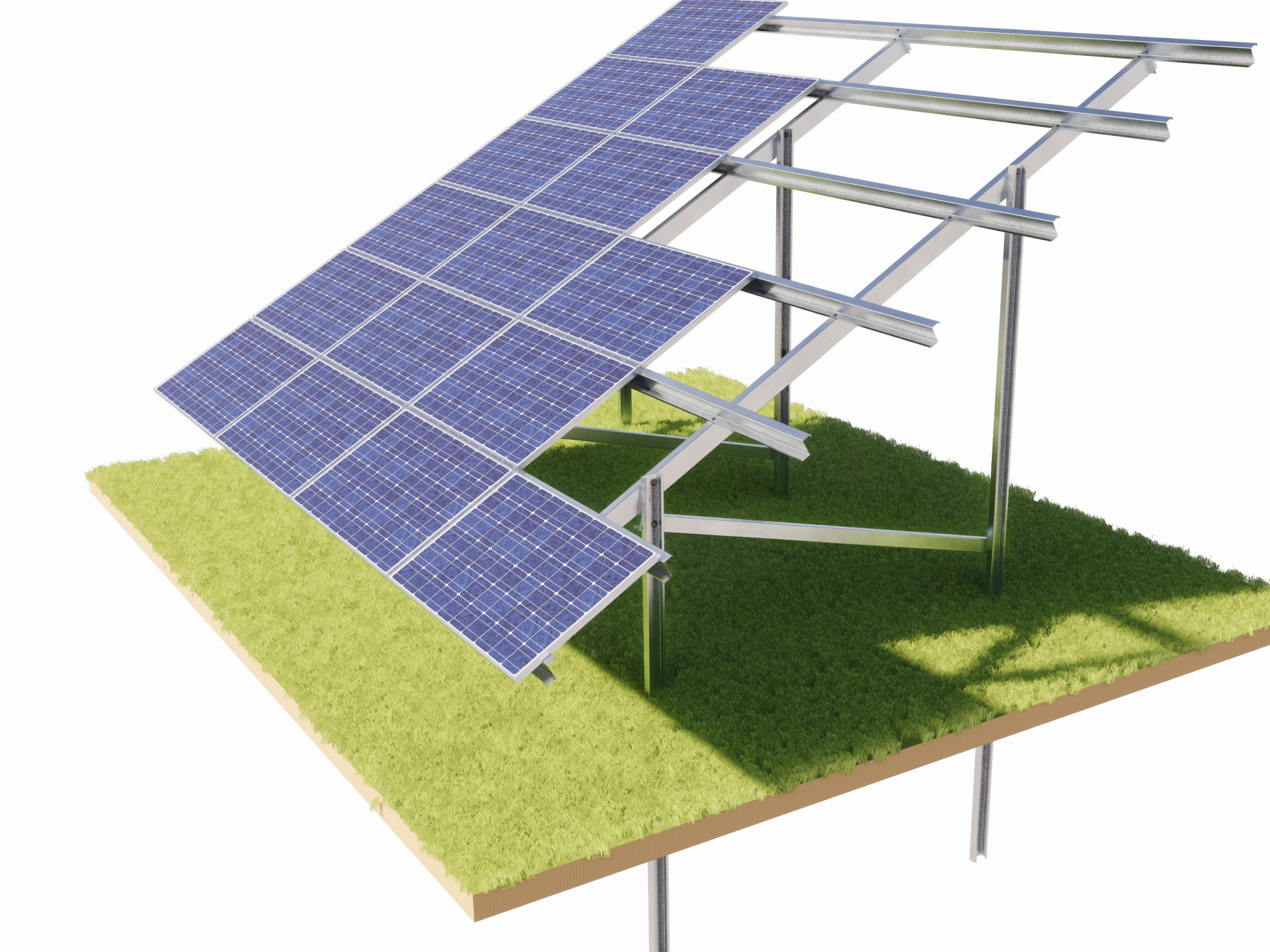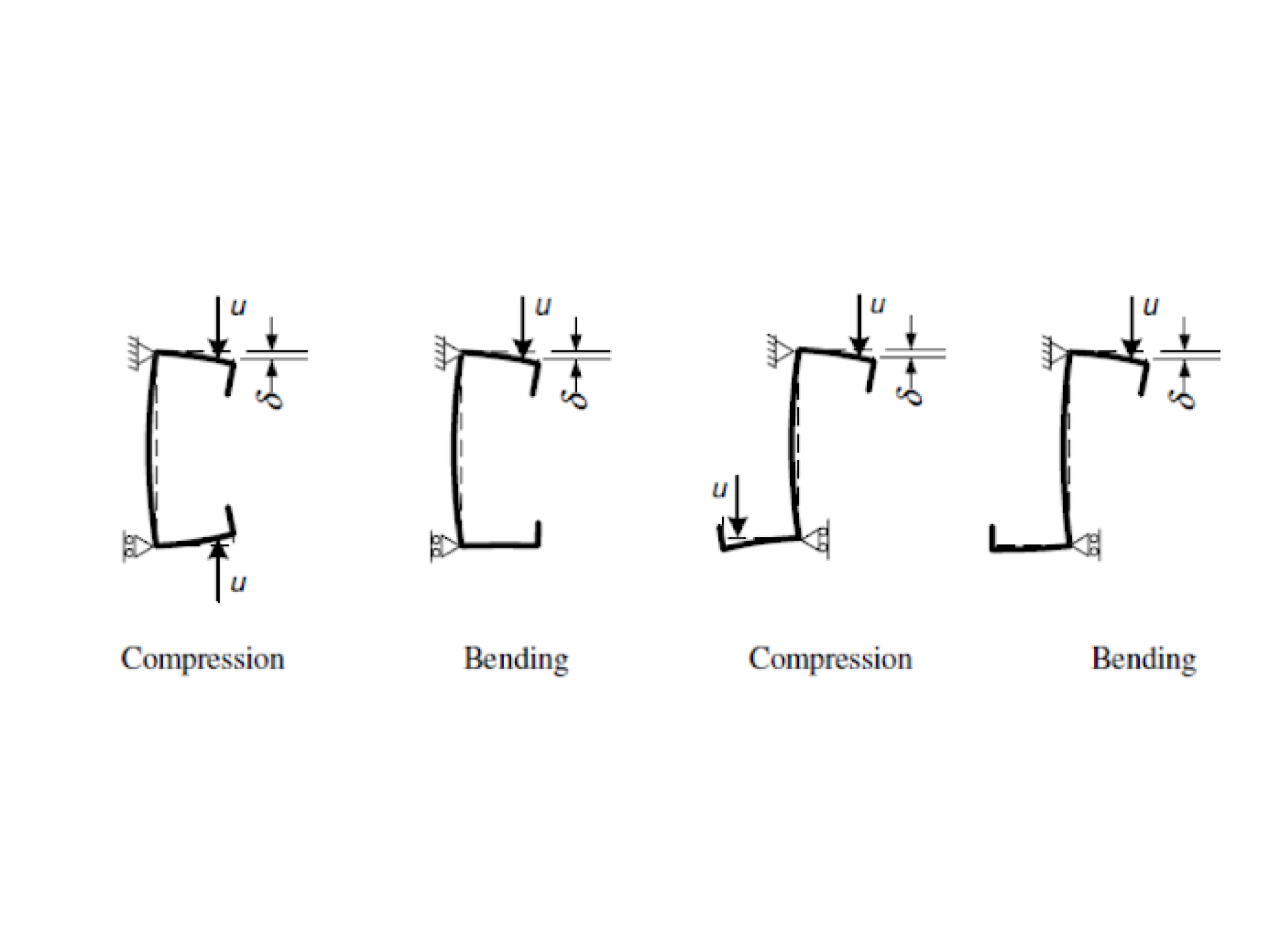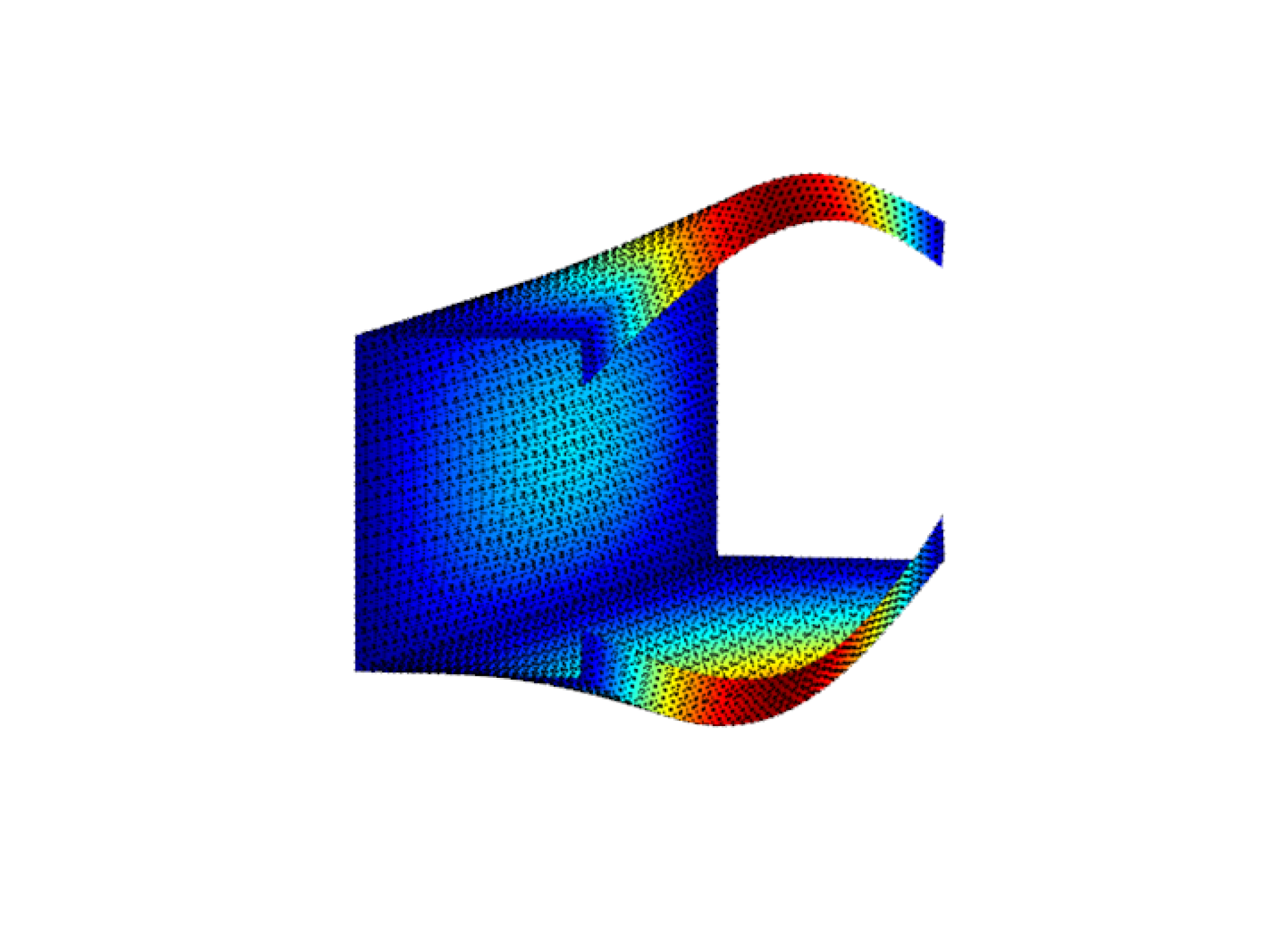Solar panel mounting structures
The demand for solar panel systems and therefore their mounting structures is steadily increasing, driving the search for ever more optimal solutions. While cold-formed sections stand out as the most effective and eco-friendly choice, they also present numerous mechanical challenges, including consideration of local and distortional buckling, shear and rotation restraints, and eccentricities.
No credit card required
Specific Feature Solutions for Solar Panel Mounting Structures in Consteel
Parametric cold-formed profiles
Extended possibilities are provided for our users to define the most commonly used types of cold-formed sections parametrically. Z, C, Sigma, Zeta, hat, L and closed profiles are all available with possible web, flange and edge stiffeners where applicable. Definition is straightforward and design is handled through General Method in a fully Eurocode-conform way with the consideration of supplementary rules of EN 1993-1-3.
Exact analysis of structural eccentricities
In Consteel, the structure can be modelled as it is in reality concerning eccentricities too. Deformations and internal forces caused by the eccentricities of loads, supports or connections are fully considered. No further action is needed after correct modelling to apply the effects in design calculations.
Global buckling analysis
Global buckling analysis serves Consteel’s automatic stability design based on the General Method of EN 1993-1-1. It is a linear eigenvalue analysis performed on the whole structural model calculating the elastic critical load levels and connected buckling shapes showing the relevant modes of stability loss. All global buckling modes (flexural, torsional, and lateral-torsional buckling, and any interactions of these) are calculated, visualized and can be used for automatic design.
Local and distortional buckling design of parametric cold-formed profiles
In Consteel, numerous different cold-formed sections can be defined parametrically, including Z, C, U, Sigma, Zeta and hat sections with variations of edge, flange and web stiffeners. Complete design calculation is provided for all of them considering local buckling according to EN 1993-1-5 and distortional buckling as per EN 1993-1-3 and interaction of those, fully automatically.
Design support for custom cold-formed profiles
Besides, several parametrically defined cold-formed sections, custom profiles can also be created in Consteel. Profile definition includes not only drawing geometry but setting standard parameters too. Therefore, complete design calculation is provided for custom cold-formed profiles considering local buckling according to EN 1993-1-5 and distortional buckling as per EN 1993-1-3 and interaction of those, fully automatically.
OUR PARTNERS
How can consteel enhance your work?
WHY CHOOSE CONSTEEL?
WHO RECOMMENDS US?

’Consteel is a great asset for Arambol Ingeniería S.L. Thanks to its workflow we can design, calculate and present a project in record time. The program is very intuitive and easy to use. Technically, the seventh degree of freedom is an enormously useful tool to check structures with the general method, and even obtain reliable results thanks to the use of buckling shapes together with the imperfections to obtain utilization ratios that, physically, are more realistic than the reduction coefficients. Consteel has very specialized features such as the shear field or the frame corner wizard that add an extra degree of professionalism to the calculation, which translates into greater efficiency in the use of steel and, therefore, money.’

’The Alba Arena project highlighted the extraordinary potential of the Consteel software and Pangolin. It is a pioneering technology that enables the parametric design of complex geometry and large-scale structures through the Grasshopper system. The Pangolin award is an exceptional recognition for me and the bim.GROUP, as it is a positive feedback on the quality of our work and an opportunity to showcase our expertise on an international level.’ said Dávid Lewandowski, Steel Structure Designer, regarding the award.’

’Consteel’s technical support team is very professional. Especially Mr. Balint Vaszilievits-Sömjén, he has been a great help to us! We were impressed by his professionalism and dedication. We are satisfied with the use of Consteel, which has proven its worth in our international projects.’
’I started using the Consteel design software during my university studies, when it was Consteel version 6. Even then I was impressed by the simplicity, transparency, and speed of the program. Since then, I have had the pleasure of designing many structures with the program, from small to large: industrial halls, office buildings, large opening roof structures, staircases, flying garages, pipe bridges, canopies, secondary closure elements, or the transmission line poles on which my doctoral thesis was based.
The bottom line is that it allows a structural engineer to model any structure in 3D in a structurally correct way, yet quickly and with a low risk of error. The most complex geometric type includes, for example, a lattice structure, where stability loss shapes can be efficiently calculated and sections optimised. One of my favourite features is the interpretability of the results, and the fact that the program receives significant updates year after year, which is the most user-oriented.’

’From the very beginning, I really like Consteel because it can be used to perform global steel structure tests in a complex and compact way, efficiently. In addition, the software integrates well with automated parameter-driven design algorithms – so I can heartily recommend it.’


The approach of the Consteel team to software development also deserves praise, which shows a well-thought-out path of software development in terms of suitability for practical applications (and not only in terms of changing the graphic interface as is the case in other developers).
We recommend Consteel to all experienced engineers.’


knowledge behind consteel
SIMPLIFY YOUR DESIGN PROCESS







